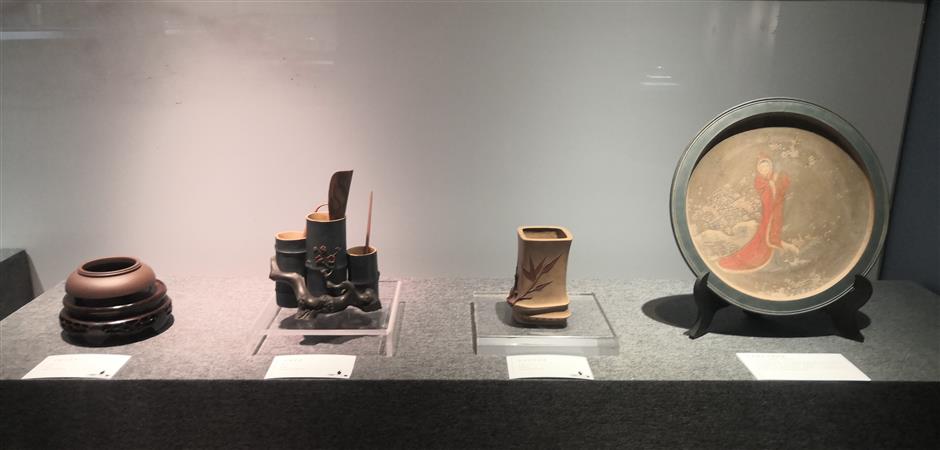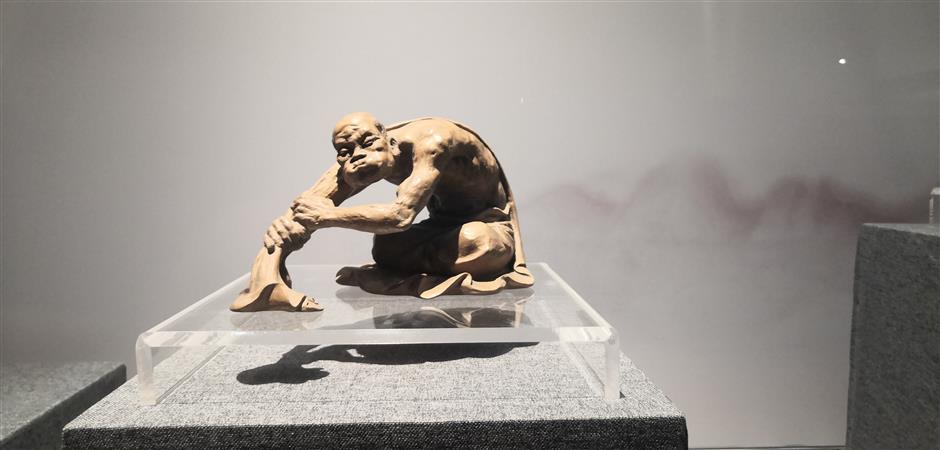Zisha teaware on exhibit at Hangzhou kiln museum

Yixing City in Jiangsu Province is the birthplace of zisha teapots. Yixing zisha have been not only vessels for brewing tea, but also artworks combining the aesthetic with the practical throughout the history.
An ongoing exhibition at the Southern Song Guan Kiln Museum in Hangzhou displays 105 zisha teapots and artworks made from the Qing Dynasty (1644-1911) to the present day.
Zisha teapots, which literally means purple clay teapots, were invented to improve the taste of tea. Centuries ago, they were a must for tea connoisseurs in China.
During the Ming Dynasty (1368-1644), zisha teapots were simple and plain and often had grit on the surface due to immature manufacturing techniques.
Rough zisha teapots were gradually replaced by quality counterparts that featured smooth surfaces and lines in the Qing Dynasty. Craftspeople started to adorn the vessels with auspicious motifs and patterns, including flowers, birds and mythical creatures, as shown in the exhibition.

More than 100 utensils made of Yixing zisha are showcased at the Southern Song Guan Kiln Museum in Hangzhou.
Painters, poets and seal-carving artists were engaged in making zisha teapots then. Plum blossoms, pine trees, orchids, bamboo, osmanthus blossoms and chrysanthemum were commonly used to portray the nobleness of literati.
In the late Qing Dynasty, zisha teapots were exported to Southeast Asia in large quantities. To cater to overseas consumers, Yixing craftspeople applied techniques from gem processing, polishing the teapots with a shining finish. These exported products are also on view.
Other special techniques such as glazing, enameling, silver and gold inlay were also employed, enriching zisha varieties during this period.
Yixing zisha teapots feature a variety of colors, including black, blue, dark green and gray. The potters mixed clay and oxidized metal to achieve different colors.
In modern times, the clay is not limited to being fired into teapots. Artists have developed it into a medium for creating figurines and sculptures. Some of these zisha artworks are also displayed.


Showcased are vivid figurines and sculptures created by zisha clay. In modern times, the clay is not limited to being fired into teapots. Artists have developed it into a medium for creating figurines and sculptures.
Yixing zisha teapots exhibition
Date: Through Novermber 15
Venue: Southern Song Guan Kiln Museum
Address: 60 Nanfu Rd
南复路60号
















